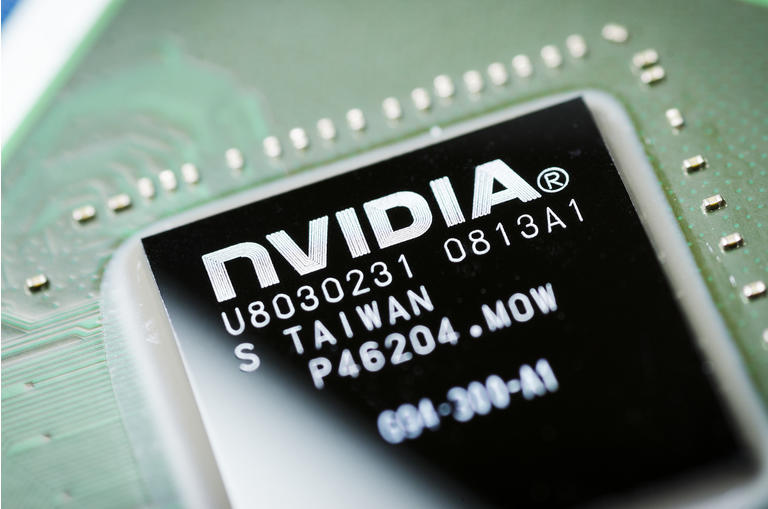Nvidia: Lord Of The Metaverse
Dec. 08, 2021

Zen Analyst
Summary
- The company stands to make hundreds of billions through hardware and software sales to the builders of the metaverse.
- NVIDIA GPUs and Omniverse are both positioned to win.
- Mix-shift to software revenue will increase NVDA's relative valuation.

Antonio Bordunovi/iStock Editorial via Getty Images
For most people, when they think of the metaverse, they think of Meta Platforms (formerly Facebook) ( FB), Roblox ( RBLX), Unity ( U), Epic Games, and other internet & interactive entertainment companies. However, the most important company for building the metaverse is likely NVIDIA ( NVDA), which is still commonly — and falsely —perceived as just a GPU hardware company.
At the risk of oversimplifying the company’s massive technology portfolio, NVIDIA enables the metaverse in two ways: indirectly through its GPUs and directly through Omniverse, its own metaverse.
The opportunity for the company is nearly limitless: the current total addressable market for the company is at least $360 billion and has the potential to grow into trillions.
Graphics Processing Unit (GPU)
A metaverse that provides a convincing immersive experience requires convincing graphics, physics, and AI agents, and NVIDIA’s GPUs play a crucial role in simulating all three.

Source: company
In a July 2021 interview with The Verge, Mark Zuckerberg, CEO of Meta Platforms (previously Facebook), said:
- You can think about the metaverse as an embodied internet, where instead of just viewing content — you are in it. And you feel present with other people as if you were in other places, having different experiences that you couldn’t necessarily do on a 2D app or webpage…
In other words, the metaverse will be much more graphically intense than the old internet of 2D apps and websites. If you think about it, the metaverse is basically a massively multiplayer online role-playing game (MMORPG), where the definition of “game” expands “the game of life.”
Ask any gamer, and they will tell you that NVIDIA practically has a monopoly on high-end gaming GPUs. The company’s dominance is due to its market-leading technologies, such as its real-time ray-tracing technology, which could simulate the physical behavior of light in the digital environments of games and the metaverse.

Source: company
When it comes to the discrete GPU market, NVIDIA isn’t just the 800-pound gorilla, it is nearly the whole jungle. According to JPR, NVIDIA has an 83% share of the Q2 2021 PC discrete GPU market. Likewise, NVIDIA GPUs also dominate in the data center with over 80% market share in AI workloads.
When Zuckerberg first laid out his vision of the metaverse to investors during the July 28, 2021 earnings call, an analyst asked him about the building blocks of the metaverse that others need to build. Zuckerberg replied:
- I do think this is going to be a macro wave overall that a lot of companies are going to be able to ride and benefit from. So whether that’s companies like NVIDIA that are building a lot of the graphics chips that are going to be really important for a lot of the content that I think is going to be increasingly graphically intense, that certainly, building those kind of graphic chips is not a thing that we’re intending to get into. So we’re certainly counting on companies like that in the industry to kind of continue improving and compounding overall.
Zuckerberg’s special mention of NVIDIA acknowledges the company’s crucial role in building the metaverse.

Source: company
During the company’s Q3 2021 earnings call, CEO Jensen Huang believes the metaverse will be a massive opportunity for the company’s hardware business:
- And my guess would be that the hardware part of it is probably going be about half and then the licensing part of it will probably be about half over time. But this is really going to be one of the largest graphics opportunities that we’ve ever seen.
Omniverse

Source: company
NVIDIA’s metaverse is already here. On November 11, 2021, NVIDIA announcedOmniverse Enterprise is now generally available by subscription from BOXX Technologies, Dell Technologies (NYSE: DELL), HP (NYSE: HPQ), Lenovo ( OTCPK:LNVGY, OTCPK:LNVGF), and Supermicro.
You can think of the Omniverse as NVIDIA’s metaverse for the enterprise, which offers the ability to simulate physics in a 3D collaborative virtual environment.
Omniverse is a way for people to collaborate when doing 3D design work. NVIDIA monetizes Omniverse Enterprise through a subscription model starting at $9,000 per year for a workgroup of 2 Creators, 10 Reviewers, and 4 Nucleus subscriptions. The company believes there are 40 million addressable creators globally, implying a TAM of at least $180 billion for its current Enterprise subscription offering.
"The traction has been amazing. The appetite for this thing has been quite amazing," said NVDA’s CFO at the November 2021 Wells Fargo conference.
During the company’s Q3 2021 earnings call, management noted the following wins:
- Professionals at over 700 companies are evaluating the platform, including BMW, Ericsson, Lockheed Martin, and Sony Pictures.
- More than 70,000 individual creators have downloaded Omniverse since the open beta launch in December.

Source: company
If we dare to dream, the future opportunity for Omniverse seems unlimited. According to Jensen Huang, the addressable market for Omniverse includes hundreds of millions of cars, robots, intelligent agents, and all the economic transactions that could take place on the platform:
- There are a couple of hundred million out of digital agents, intelligent agents, some of them human, some of them robots, some of them avatars at $1,000 per agent per year, behind it are NVIDIA GPUs in PCs, NVIDIA GPUs in the cloud, and NVIDIA GPUs in Omniverse servers.
- And so what long-term why people are so excited about it is, at the highest level, what it basically means is that long-term, when we engage the Internet which is largely 2D today, long-term, every query will be 3D. Instead of just querying information, we would query and interact with people and avatars and things and places and all of these things are in 3D.
- So, hopefully, one of these days that – and we will try to realize it as fast as we can, every transaction that goes over the Internet touches a GPU.
I am not brave enough to put a TAM on this vision if it plays out, but any description will use “trillion” as the smallest unit of measure. |











